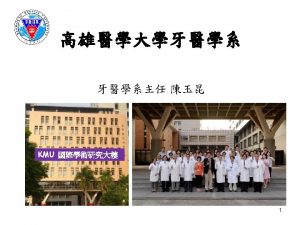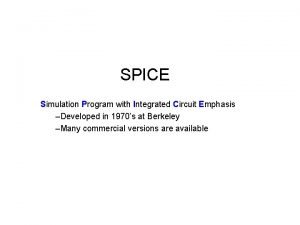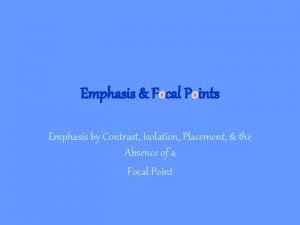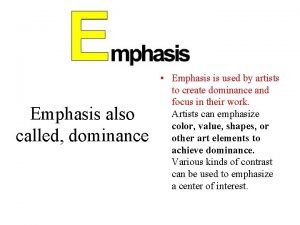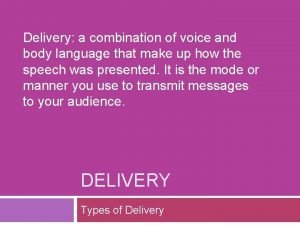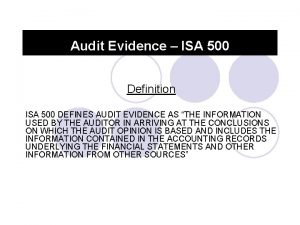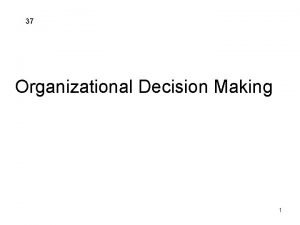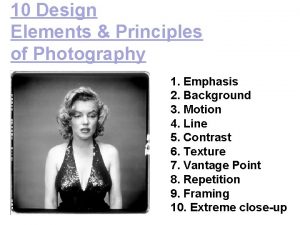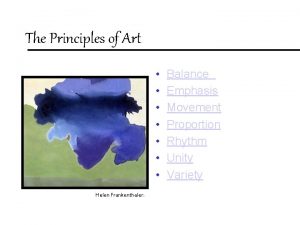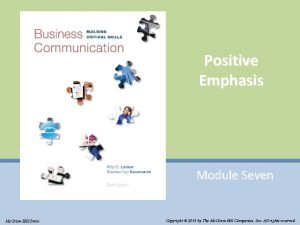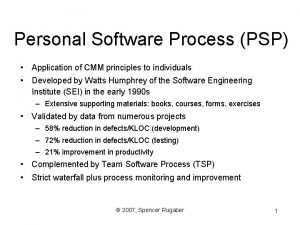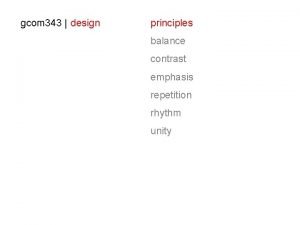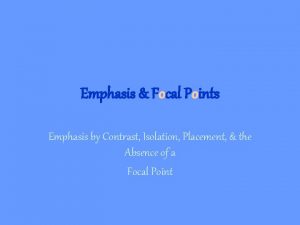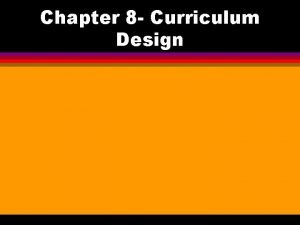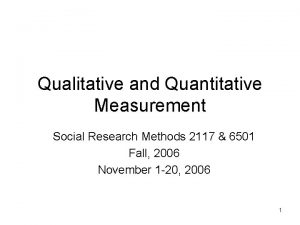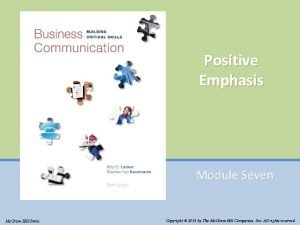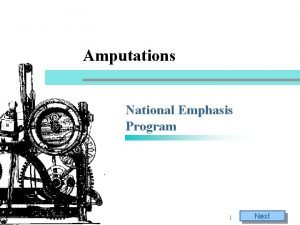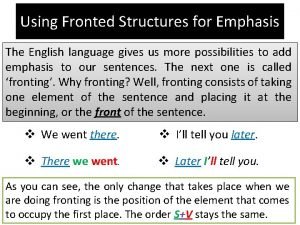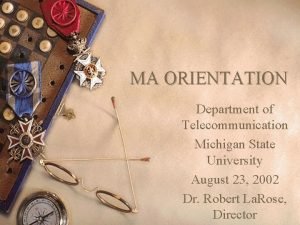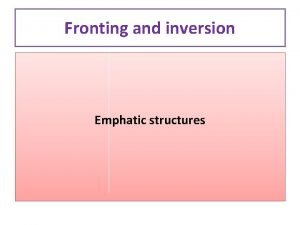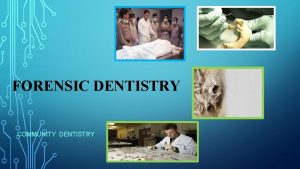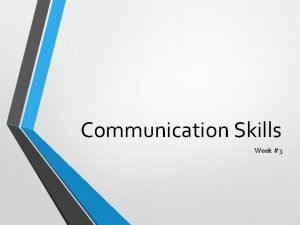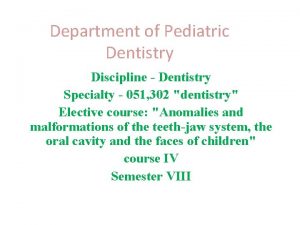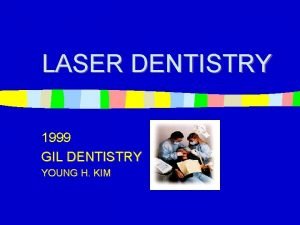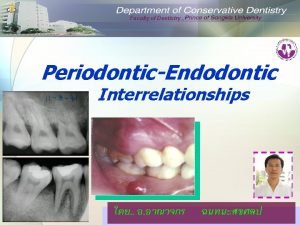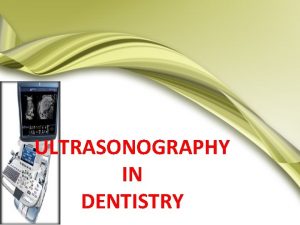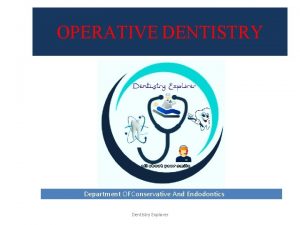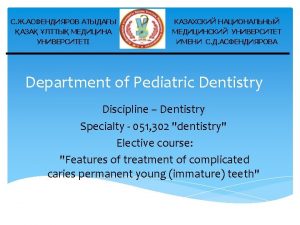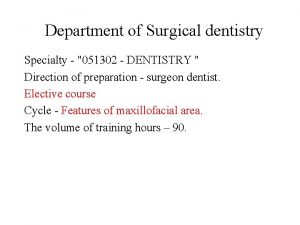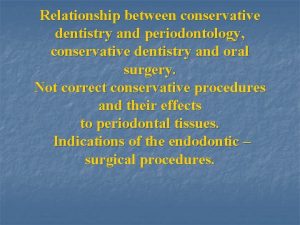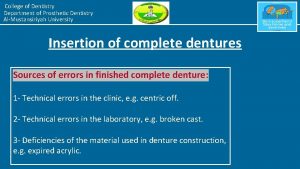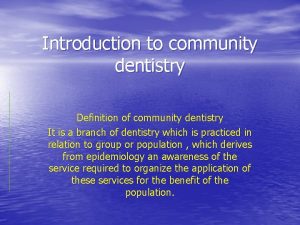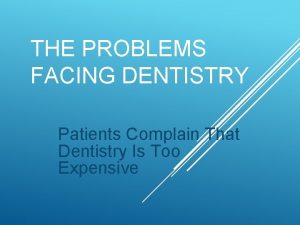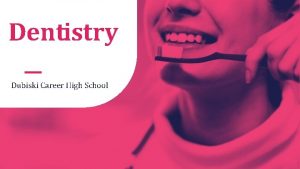1 Communication skills in dentistry with emphasis on















































- Slides: 47








牙科放射線學(1) Communication skills in dentistry with emphasis on oral radiography 接受X光影像攝影的溝通技巧 陳玉昆教授: 高雄醫學大學 口腔病理科 07 -3121101~2755 yukkwa@kmu. edu. tw

學 習 目 標 - 認識牙科X光影像攝影 -了解牙醫師與病患 (含X光影像攝影)溝通技巧 References: 1. Eric Whaites: Essentials of dental radiography & radiology 3 rd edition, Chapter 8 -10, p. 75 -116 2. Eric Whaites: Essentials of dental radiography & radiology 1 st edition, Chapter 8, p. 59 -77 3. Kaohsiung Medical University, Oral Pathology Department 4. 高雄市牙醫師公會資料

Intraoral Radiography Periapical Radiography Bitewing Radiography Occlusal Radiography


Full mouth X-ray films Upper Vertical Bitewing Molars Premolars Canine Incisors Canine Premolars Vertical Bitewing Premolars Canine Incisors Canine Premolars Lower Ref. 3 Molars Vertical Bitewing Molars Left Right Molars

Paralleling technique (平 行 法 ) upper Anterior tooth 左上、右下 象限 右上、左下 象限 直放 橫放 橫放 直放 Anterior tooth lower Ref. 3 Posterior tooth

Bit e Anterior 平行法 blo ck Po ste rio Wh r B ite loc blo ato ck Me r rin g ind tal ica sup to po r r rt od ing Patient positioning 上顎門齒 Ref. 1, 2, 3 Positioning 上顎門齒

Bit e Anterior 平行法 blo ck Po ste rio Wh r B ite loc blo ato ck Me r rin g ind tal ica sup to po r r rt od ing 上顎犬齒 Positioning Patient positioning Ref. 1, 2, 3 上顎犬齒

Bit e Anterior 平行法 blo ck Po ste rio Wh r B ite loc blo ato ck Me r rin g ind tal ica sup to po r r rt od ing 上顎小臼齒 Positioning Patient positioning 上顎小臼齒 Ref. 1, 2, 3

Bit e Anterior 平行法 blo ck Po ste rio Wh r B ite loc blo ato ck r rin Me g ind tal ica sup to po r r rt od ing Patient positioning 上顎大臼齒 Ref. 1, 2, 3 上顎大臼齒 Positioning

Bit e Anterior 平行法 blo ck Po ste rio Wh r B ite loc blo ato ck Me r rin g ind tal ica sup to po r r rt od ing Patient positioning 下顎門齒 Ref. 1, 2, 3 Patient positioning 下顎門齒

Bit e Anterior 平行法 blo c k Po ste rio Wh r B ite loc blo ato ck Me r rin g ind tal ica sup to po r r rt od ing 下顎犬齒 Positioning Patient positioning Ref. 1, 2, 3 下顎犬齒

Bit e Anterior 平行法 blo ck Po ste rio Wh r B ite loc blo ato ck Me r rin g ind tal ica sup to po r r rt od ing Patient positioning 下顎小臼齒 Ref. 1, 2, 3 Positioning 下顎小臼齒

Bit e Anterior 平行法 blo c k Po ste rio Wh r B ite loc blo ato ck Me r rin g ind tal ica sup to po r r rt od ing Patient positioning 下顎大臼齒 Ref. 1, 2, 3 Positioning 下顎大臼齒


Periapical Radiography Paralleling technique Bisecting angle technique Positioning difficulties Central ray of X-ray beam aimed through tooth apex Long axis of tooth Alveolar bone level is not accurate Image shortened Bisecting line Long axis of film Vertical angulation too large 2 -3 mm of film visible beyond the incisal edge Ref. 1 Vertical angulation too small Vertical angulation Image elongated

Bisecting angle technique Horizontal angle Anterior teeth 正照想要照的牙齒 Upper arch Long axis of the film packet vertical 2 -3 mm beyond the incisal edge Long axis of the film packet horizontal 2 -3 mm beyond the occlusal edge Lower arch Posterior teeth Ref. 1

Bisecting angle technique Posterior tooth Bite fork Ref. 3 鱷魚夾 Anterior tooth

分角線法 上顎門齒 Patient positioning Vertical angle Patient positioning Ref. 1, 2, 3 Vertical angle 上顎犬齒


分角線法 下顎門齒 Patient positioning Ref. 1, 2, 3 下顎犬齒



Importance of patients communication for dentists 1. The dentist–patient relationship is a crucial factor that has an influence on the viability of the average dental practice 2. Dental students should be educated about the importance of developing and mastering sound communication skills with patients.

Importance of patients communication for dentists 3. Little emphasis was placed on the development of sound communication skills because dental students’ cognitive and clinical development have always been emphasized 4. It has been noted that the ability to communicate skillfully and with purpose rarely occurs as a gift, but is learned, the reality is that the term ‘communication skills’ is perceived as an intrinsic part of an individual’s personality, his/her cognitive functioning and social experience

Steps for patients communication for dentists A. Opening the interview (creates safe environment): 1. Greets patient 2. Obtains patient’s name 3. Introduces self 4. Attends to patient’s physical comfort (here and throughout interview) 5. Identifies and confirms patient’s chief complaint

Steps for patients communication for dentists B. Gathering information: structuring the interview (explains interview process): 1. Negotiates an agenda for consultation 2. Attends to timing

Steps for patients communication for dentists C. Gathering information: exploration of problems (determines chief complaint): 1. Encourages patient to give history of chief complaint 2. Uses open questioning technique(s) 3. Uses closed questioning technique(s) 4. Listens attentively (no interruptions; allow time for patient to think before answering)

Steps for patients communication for dentists 5. Facilitates patient’s responses (use of encouragement, silence, repetition, paraphrasing, interpretation) 6. Clarifies patient’s statements which are vague and need amplification 7. Summarizes at end of a specific line of inquiry to verify own interpretation of what patient has said to ensure no important data was omitted

Steps for patients communication for dentists D. Understanding the patient’s perspective (determines expectations, psychosocial issues & emotions): 1. Determines patient’s expectations regarding each problem 2. Picks up verbal cues (patient’s need to contribute information/ask questions; information overload; distress) 3. Encourages expressions of feelings 4. Encourages patient to contribute ideas/ suggestions/preferences/beliefs 5. Accepts legitimacy of patient’s views/beliefs (nonjudgmental)

Steps for patients communication for dentists E. Sharing information (presents treatment plan): 1. Discusses treatment options 2. Discusses consequences of not proceeding with treatment plan (in non-threatening manner) 3. Provides information about procedures, processes, benefits & advantages, value & purpose 4. Uses easily understood language (avoids or adequately explains technical terminology) 5. Shares own thoughts & ideas

Steps for patients communication for dentists F. Reaching an agreement on treatment plan(s) (treatment plan acceptance): 1. Obtains patient’s view of need for action (perceived benefits) 2. Negotiates mutually acceptable treatment plan (encourages patient to make choices; address concerns)

Steps for patients communication for dentists 3. Elicits patient’s understanding about treatment plan(s) 4. Takes patient’s lifestyle, beliefs, cultural background abilities into consideration 5. Encourages patient to be involved in implementing treatment plan (to take responsibility and be self-reliant) 6. Asks about patient’s support network for decision -making

Steps for patients communication for dentists G. Closing the interview: 1. Summarizes session briefly 2. Contracts with patient regarding next step(s) for patient and dentist 3. Explains possible unexpected outcomes and safety-nets appropriately

Steps for patients communication for dentists H. Nurturing the relationship (employs relationship building blocks): 1. Demonstrates interest 2. Demonstrates respect 3. Communicates warmth 4. Demonstrates appropriate non-verbal behavior (for example eye contact, posture & position, movement, facial expression, use of voice) 5. Reading, writing, use of computer do not interfere with dialogue/rapport 6. Shows empathy with patient 7. Deals sensitively with embarrassing & disturbing topics


Summaries 1. The culture of dentistry places a high premium on technology. Dental schools should ensure a balanced approach in their training of dentists to ensure that the focus on technology is not at the expense of the dentist–patient relationship

Summaries 2. Since dental care occurs in the context of relationships amongst patients and dentists, dental schools should complement students’ cognitive and clinical development by teaching the human dimensions of dental care by means of the development and implementation of courses in communication skills

Summaries 3. Standardized patient (SP): a professional actress was trained as SP to portray the case study (clinical scenario) in a consistent, reproducible and measurable manner ) 4. To assist the SP in understanding the nature of the dental scenario and its presenting signs and symptoms, written case notes were prepared for the SP to review

 Contoh penerjemahan komunikatif
Contoh penerjemahan komunikatif Communication skills definition
Communication skills definition Intrapersonal skills example
Intrapersonal skills example Skills are
Skills are Ontario skills passport
Ontario skills passport Spice (simulation program with integrated circuit emphasis)
Spice (simulation program with integrated circuit emphasis) Emphasis contrast
Emphasis contrast Also known as dominance
Also known as dominance Vocal emphasis
Vocal emphasis Isa500
Isa500 The incremental decision process model places emphasis on:
The incremental decision process model places emphasis on: Elements of design photography
Elements of design photography Principles of art emphasis
Principles of art emphasis Wake turbulence avoidance
Wake turbulence avoidance Positive emphasis
Positive emphasis Entrance là loại hoạt cảnh gì
Entrance là loại hoạt cảnh gì Psp in software engineering
Psp in software engineering Emphasis on
Emphasis on Negative adverbial expressions
Negative adverbial expressions The actual surface feel of the simulated appearance
The actual surface feel of the simulated appearance Balance contrast emphasis
Balance contrast emphasis Primary and supporting instruments
Primary and supporting instruments Points of emphasis
Points of emphasis Life-situations design
Life-situations design Primary and supporting instruments ifr
Primary and supporting instruments ifr Balance
Balance Emphasis center of interest
Emphasis center of interest Coherence and unity
Coherence and unity Little emphasis on sociocultural context
Little emphasis on sociocultural context Emphasis timer
Emphasis timer Society where emphasis shifts from production
Society where emphasis shifts from production Qualitative research research design
Qualitative research research design Measure vs measurement
Measure vs measurement Positive emphasis
Positive emphasis Iambic pentameter
Iambic pentameter Importance of emphasis
Importance of emphasis Dan preece woodworking
Dan preece woodworking Phrase and clause
Phrase and clause Team emphasis
Team emphasis Emphasis
Emphasis Emphasis
Emphasis Emphasis
Emphasis Michigan state university orientation
Michigan state university orientation Hyper commercialism
Hyper commercialism Fronted structures for emphasis
Fronted structures for emphasis Emphasis
Emphasis What does emphasis mean in art
What does emphasis mean in art Types of research exploratory descriptive causal
Types of research exploratory descriptive causal

